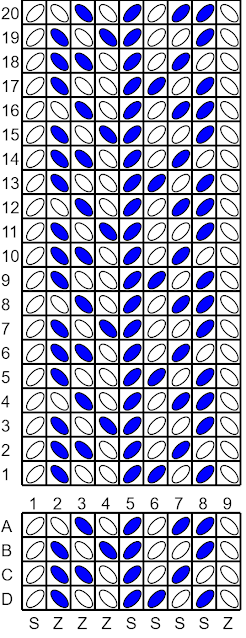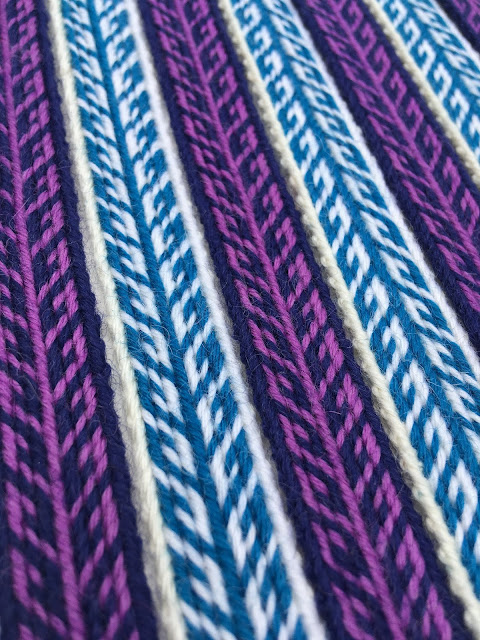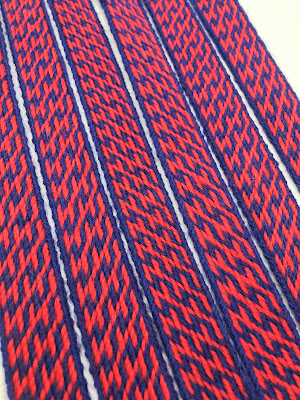This is an easy weave, as the tablet threadings produce the pattern so there's no need to make turning direction changes or keep count of numbers of turns. A perfect pattern to work on if you're new to tablet weaving.
You can download the TDD file for this draft by clicking here.
The text version of this draft is as follows:
- Threading:
- S threaded tablet
- Blue (#0000ff)
- Blue (#0000ff)
- Blue (#0000ff)
- Blue (#0000ff)
- Z threaded tablet
- Yellow (#ffff00)
- Blue (#0000ff)
- Blue (#0000ff)
- Blue (#0000ff)
- Z threaded tablet
- Blue (#0000ff)
- Yellow (#ffff00)
- Yellow (#ffff00)
- Yellow (#ffff00)
- Z threaded tablet
- Yellow (#ffff00)
- Blue (#0000ff)
- Yellow (#ffff00)
- Blue (#0000ff)
- Z threaded tablet
- Yellow (#ffff00)
- Yellow (#ffff00)
- Blue (#0000ff)
- Yellow (#ffff00)
- Z threaded tablet
- Blue (#0000ff)
- Blue (#0000ff)
- Yellow (#ffff00)
- Blue (#0000ff)
- S threaded tablet
- Blue (#0000ff)
- Blue (#0000ff)
- Blue (#0000ff)
- Blue (#0000ff)
- Turning:
- 7F
- 7F
- 7F
- 7F
- 7F
- 7F
- 7F
- 7F
As with all of the free patterns on this site, you are welcome to weave them, sell bands woven using them, and use them to teach other weavers, just as long as you state where you found them.











